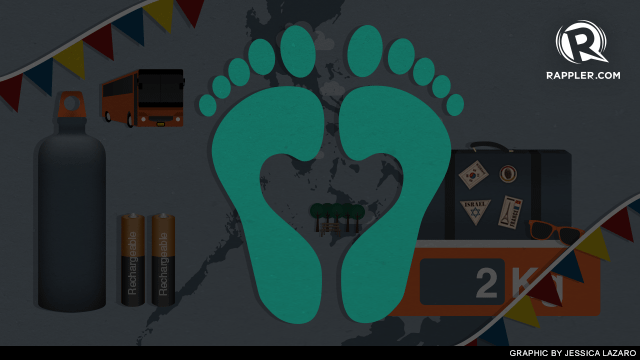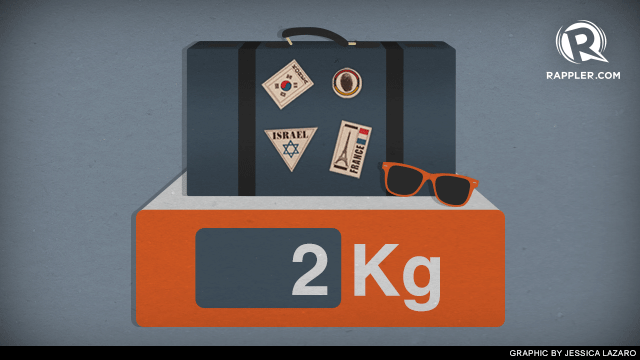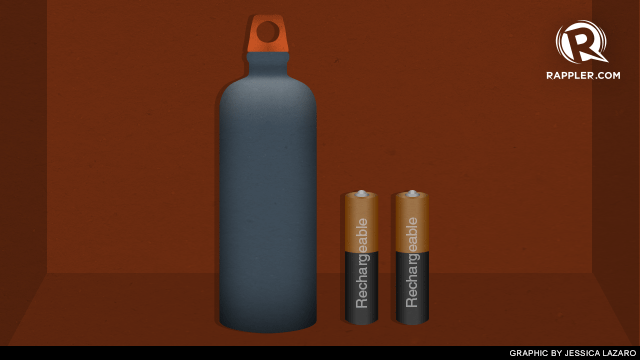SUMMARY
This is AI generated summarization, which may have errors. For context, always refer to the full article.
MANILA, Philippines – I have been climbing mountains for as long as I can happily remember; the very first time was on an elementary picnic up to a small hill called Mt Cabuyao just an hour away from my city. Even back then I followed the aesthetic: to leave no trace.
I was careful to pick up every piece of litter I had brought along with me, and made sure that I had only taken photos and left footprints on the mountain.
Around 10 years ago now I published a piece about leaving no trace — “A Promise to Leave No Trace” — and talked about the human impact of mountain-climbing on the people who lived in what we considered paradise. I remember a section in that piece where a man named Nilo Lomasteo from Ta-aw, a tiny village in the mountains near Mt Pulag, asked me why I did what I did climbing mountains.
That’s when I realized that my “great adventure” was simply “everyday” for them and discovered how silly I looked all coated in nylon gore-tex and expensive rubber boots when there he was wearing jeans, a cotton shirt, and a pair of slippers happily climbing away what I deemed for myself the great adventure. Silly me.
Ten years later I walk through the same mountain I must have climbed over 50 times by now, I have lost track of the actual number. Nowadays, the mountain is filled with climbers each weekend, sometimes even numbering in the hundreds; each one taking care to leave no trace, or at least the majority of them.
I was sitting by the side of the trail watching the footsteps go by — Hi-tec, Asolo, Merrel, Adidas, North Face, Montrail, Spartan, Islander, Timberland. I looked up right after Spartan and saw a pair of blue jeans and a ratty old shirt and remembered Nilo of Ta-aw, who had questioned my adventures 10 years ago.
I smiled at the face in front of me and got a look that asked me the same exact question I had been asked a decade ago: “Why?”

As we walked through the villages, I wondered how a thousand people a year had changed the lives of its inhabitants. I found out that it changed very little; the people went about their business as if all the throngs of climbers had not existed at all — farms were expanded into the forests, lakes were tapped for irrigation, the smell of manure filled the air.
Yes, it was business as usual. Tourists were, in fact, simply tolerated but not an added value for their daily lives; save the occasional stint as a porter or guide for a select few. Otherwise, the park could just as easily be looked at as a mountain of potential cabbage patches and potato farms.
The problem I think lies in the fact that we focus too much on leaving no trace, so that every mountaineer that climbs the mountains is a self-contained unit: own tent, stove, food, and water. If you think about it, even the vegetables we bring come from the markets in our cities, even when there is ample supply in the farms in these mountains.
Yes, all these practices in fact help us leave no trace, and we do leave without a trace, not even in the local economy.
Adventure to us, everyday life to them
For the many thousands who climb the mountains every year (myself included), we have left no trace of our visit, none at all. It is not surprising then to find that the locals who call the mountains their home do not give the mountains the same value that we do. They do not see the wild places as the last refuge of green; instead, they see them as possible resources for their economy because, no matter how many times we have climbed or how many people we have brought there, we have not left anything.
We have not given them reason to keep a forest stand from becoming a cabbage patch or a lake from becoming a muddy pool.
I wish to propose a radical old concept for all mountaineers who climb mountains: climb with your bags nearly empty, climb light with just your feet and an open mind for good conversation.
Leave the stove at home and have your food cooked by the locals. Buy your supplies from the local sari-sari stores; even though they only have limited supply those will still be enough for you to live on. Eat the camote and drink the tapuy rather than bringing energy bars and cheap gin.
Leave your tents at home and pay for local homestay accomodations, or buy a native chicken and have some pinikpikan — you’ll find this food and way of travel much more fullfilling than simply walking past homes and sitting inside a bright nylon and plastic tent. You can still wear your gore-tex and expensive boots but lets put some shoes on those slippers as they walk up the trail with you and some jackets on those shirts as they shiver from the cold standing by your side as you watch the sun rise over the clouds.
We often forget in our effort to leave no trace that our mountains have people living within them for much longer than we have been climbing. Our adventures are their daily lives. It is time that our adventure benefit their lives in more ways than simply having them walk by our side up the mountain and watch as we eat pesto from our stoves and cooksets while they eat from a can.
Yes, our mountains are beautiful, but they are not as wild as you think they are. If we want to keep them that way, I think it is time we put down those heavy bags and promise to leave a trace.
Here are several suggestions on how to travel responsibly:
1. Buy local – Even though it is normally cheaper to buy supplies from the city, supporting the local industries and products supports local livelihoods which prevents further encroachment into forest areas and a better standard of living for the local communities
2. Get to know the places and cultures you are going to – This helps you adjust yourself to the local norms and values and will help you respect the local customs of the area and have a more fulfilling travel experience
3. Hire local guides / responsible outfitters – Hire local guide services or sustainable outfitters like Cordillera Expeditions because they can provide valuable insights and help you navigate the local landscapes much better than if you travel alone
4. Think sustainable travel – Taking public transport rather than your own vehicle not only supports local livelihoods but will also cut down on your carbon emissions
5. Dress appropriately – That bikini top or micro shorts might be fashionable in the city but in some areas are not appropriate clothing to wear. Dress according to local norms so as not to attract unwanted attention to yourself or your group.

6. Pack lightly – This not only makes it easier to get around, you also lower your carbon footprint because heavier baggage requires more fuel to transport. On airplane flights, research has shown that every additional 10lbs per traveler requires 350 million gallons of jet fuel per year! That’s enough to keep a 747 flying for 10 years!
7. Bring your own water bottle – This is a small thing with a large impact: bringing your own water bottle not only reduces the amount of plastic that will end up in the rivers, streams, and dumpsites, it also reduces the processing energy needed for bottled water. You can also buy a portable filter which you can use in any stream or tap to make your water needs even more sustainable.
8. Use rechargeable batteries – This cuts down the toxic waste that ends up in the environment when disposable batteries are thrown away or left behind. It will also be cheaper in the long run.

9. Minimize your waste – By buying local goods and reducing the amount of goods you bring, you are already reducing the waste you produce on your trips. Choosing non-disposable items, eating biodegradable wrapped food, and bringing your own water bottle further reduce the waste you produce on your tour.
10. Help out with the local community – You can lend a hand in the community you are going to and make a positive impact while travelling; simply picking up the trash on the road is a start. Participate in local river clean up drives or join Cordillera Expeditions tours which organize forest rebuilding and rice planting and harvesting activities with the local communities. – Rappler.com
Add a comment
How does this make you feel?
There are no comments yet. Add your comment to start the conversation.